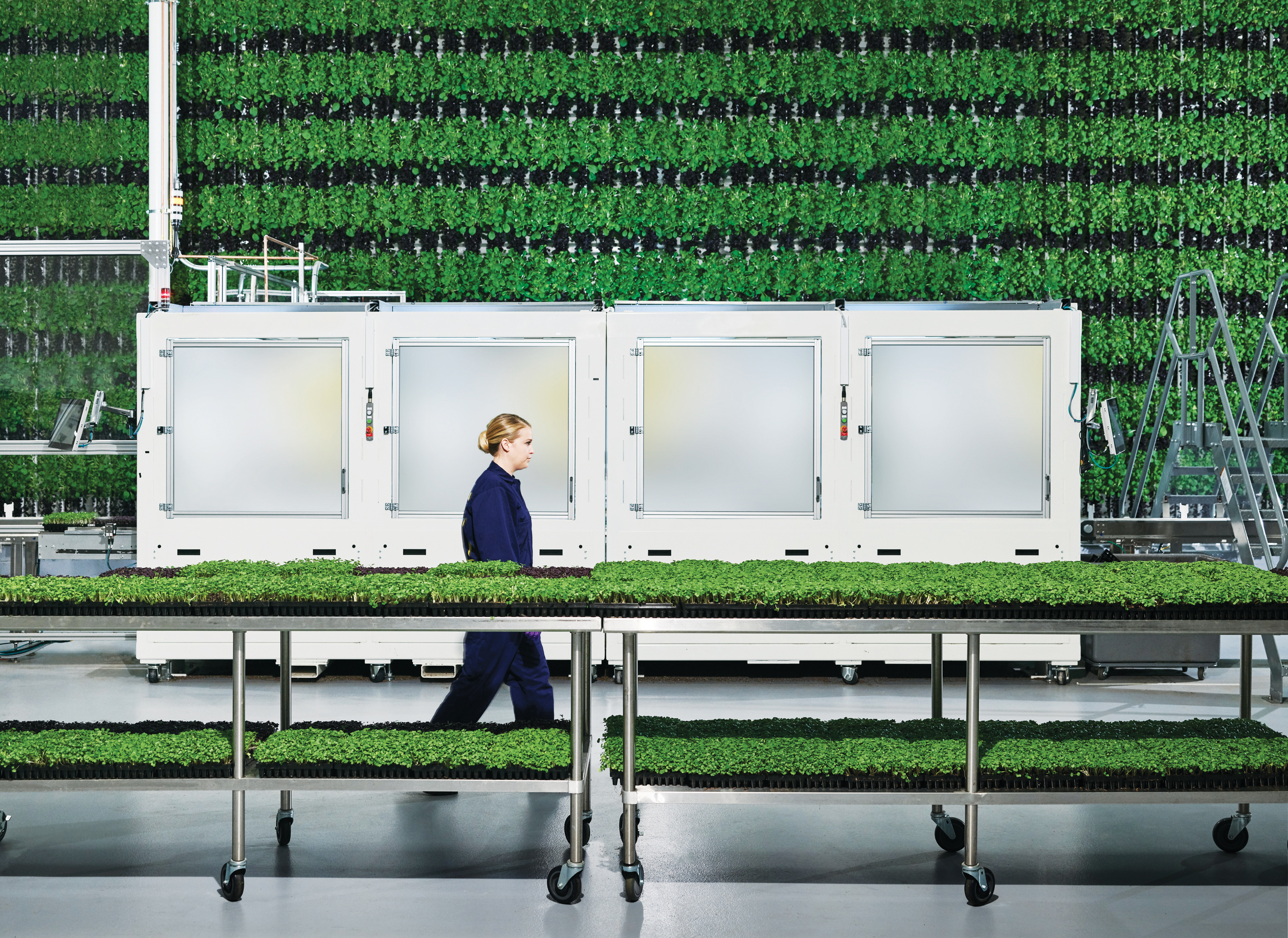Virginia Economic Review: What other opportunities exist for CEA companies aside from growing produce themselves? Could proprietary technology be licensed to other companies to create an additional revenue stream?
Olesen: I see opportunities whereby CEA is combined with education and hospitality — farms in food halls or greenhouse/restaurant combinations like De Kas in Amsterdam. The remote management system that Babylon has developed certainly has applications in many other industries — for example, we can now predict when a pump is going to fail by a tell in our graphs, which means we can send a replacement to our customer before the pump stops working. That type of predictive information would be helpful in supporting many organizations and different kinds of on-site vertical farming solutions.
Kukutai: It depends on the business model of the company in question. Some of the opportunity is adding more production because there’s so much growth left ahead. This is still the early days for the industry. There are opportunities to explore growing other types of products — Plenty farms are highly controlled environments, so we’re doing some exploratory work around that.
Others who have more of a technology offering can look at licensing models. We certainly are, since we own the key parts of our technology stack. I also think there are opportunities to explore adjacent industry efficiencies. We’re really interested in renewable packaging and new types of renewable energy that can lower the carbon footprint of our production and make it more sustainable.
Virginia Economic Review: When you compare the CEA industry in the United States with other countries, where do we stand? What can we learn from foreign leaders in the field?
Rosenberg: The United States is home to many of the world’s leading CEA companies that are pioneering new technologies and paving the way in this growing industry. Other countries around the world are increasingly interested in the expanding sector, especially those in desert and arid climates that are looking for food solutions that use less water and less arable land. AeroFarms recently opened the world’s largest indoor vertical farm dedicated to R&D in Abu Dhabi in the United Arab Emirates (UAE). The UAE imports approximately 90% of its country’s food supply, and it has looked to companies like AeroFarms to create new, sustainable food solutions to grow delicious, nutrient-rich food within the country.
Olesen: The Netherlands is the undisputed leader in the field of CEA, and they are very much involved in developing the industry in the United States and many other countries. Encouraging Dutch companies with this expertise to open subsidiaries in Virginia is a very effective way to speed up development in the United States. Encouraging investment in CEA automation, data sharing, and access to affordable electricity are critical to scaling the industry.
The Middle East is making large investments in CEA, as is Singapore. The countries that are investing most heavily in CEA are those that currently have to import almost all of their vegetables because of climate and the lack of arable land and fresh water.
Virginia Economic Review: How do location considerations differ for CEA companies versus traditional agricultural operations?
Rosenberg: With controlled environment agriculture, there are more options for site selection. The amount of sun depending on proximity to the equator is still a factor for high-tech greenhouses, but for indoor vertical farms like AeroFarms, we can place a farm anywhere, regardless of the season or weather conditions outside. At AeroFarms, our LED lights mimic the sun and our aeroponic technology acts as the soil and nutrients. We can grow our produce in any indoor space around the globe.
Olesen: CEA should be considered as a toolkit that needs to be adapted to the specific market and climate of each region. CEA operations are typically located close to the customer base to minimize transportation. Urban farms are a good example of this. Babylon’s micro-farms engage people, educate, and promote sustainability and eating healthy, and therefore are very much front-facing and located where the food is consumed in lobbies, dining rooms, and cafeterias.
Virginia Economic Review: From your perspective, what do you think makes Virginia an attractive place for agriculture companies in general and CEA operations in particular?
Rosenberg: For one, Virginia is a hub for supply chain routes that connect the Mid-Atlantic region to the rest of the U.S. AeroFarms’s farm in Danville, Virginia, is capable of serving more than 50 million people within a day’s drive. Additionally, AeroFarms chose Virginia for our newest state-of-the-art vertical farm because of the support from local, regional, and state officials who want to see the CEA industry flourish in Virginia.
Olesen: Virginia has a long traditional farming heritage. The central location on the East Coast, close to large metropolitan areas, the pro-business government, and the number of CEA companies already present set Virginia up to become the leading CEA state.
Kukutai: We chose Virginia after an extensive search of locations in part because it is in a great location to serve many, many consumers up and down the Eastern Seaboard. There are a lot of distribution centers in the area, including major retailers like our partners at Walmart, which we supply today on the West Coast and plan to supply on the East Coast.
Virginia also has some excellent infrastructure and a very business-friendly government. Capital goes where it’s needed, but it stays and grows where it’s appreciated. We’ve seen a high degree of appreciation for what we’re trying to do, not just commercially, but as an innovation sector. The support infrastructure is there, the educational institutions are there, the policy environment is there. Our decision to come to Virginia has already proven out and we can’t wait to get our first strawberry farm open there.








